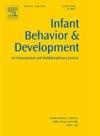探讨母亲心理健康与6个月大婴儿调节行为之间的关系:放大母亲焦虑
IF 2
3区 心理学
Q3 PSYCHOLOGY, DEVELOPMENTAL
引用次数: 0
摘要
围产期产妇的心理健康与婴儿情绪调节能力的发展有关,主要是通过其对生命第一年照顾者-婴儿互动的影响来实现的。大多数研究都集中在母亲抑郁的影响上,尽管母亲焦虑更为普遍,其对婴儿结局的影响也不太清楚。本研究旨在探讨两种常见的应激诱导范式在婴儿情绪和调节行为方面的差异,并评估抑郁和焦虑对婴儿调节行为的差异影响。六个月大的婴儿和他们的母亲(N = 126)在家中远程完成两项任务:手臂约束任务和静止面孔范式。使用爱丁堡产后抑郁量表(EPDS)亚量表测量母亲的抑郁和焦虑症状。个人研究结果表明,婴儿调节行为和婴儿反应性在两种范式之间没有显著的关联。此外,在静止面孔范式中,没有发现母亲心理健康与婴儿调节行为之间的显著关联。然而,较高的EPDS综合得分与较少的婴儿在手臂约束任务中的回避行为相关,这一结果是由焦虑分量表中的项目驱动的。这些发现表明,婴儿的调节行为可能因任务的不同而不同,也可能受到母亲亚临床焦虑水平的影响,但不受母亲抑郁水平的影响。本文章由计算机程序翻译,如有差异,请以英文原文为准。
Exploring associations between maternal mental health and infant regulatory behaviors at 6 months in the home environment: Zooming in on maternal anxiety
Maternal mental health during the perinatal period has been linked to the development of infant emotion regulation capacity, largely through its impact on caregiver-infant interactions during the first year of life. The majority of studies have focused on the effects of maternal depression, even though maternal anxiety is more prevalent and its effects on infant outcomes are less well understood. The current study aims to 1) explore differences in infant affect and regulatory behaviors across two commonly implemented infant stress-induction paradigms and 2) evaluate the differential effects of depression and anxiety on infant regulatory behaviors. Six-month-old infants and their mothers (N = 126) completed two tasks remotely in the home: the Arm Restraint task and the Still-Face Paradigm. Maternal depression and anxiety symptoms were measured using the Edinburgh Postnatal Depression Scale (EPDS) subscales. Within-person results indicated no significant associations among infant regulatory behaviors nor infant reactivity across the two paradigms. Additionally, no significant associations were found between maternal mental health and infant regulatory behaviors during the Still-Face Paradigm. However, higher EPDS composite scores were associated with fewer infant avoidance behaviors during the Arm Restraint task, and this result was driven by items on the anxiety subscale. These findings suggest that infant regulatory behaviors may differ depending on task used and may also be influenced by subclinical levels of maternal anxiety, but not maternal depression.
求助全文
通过发布文献求助,成功后即可免费获取论文全文。
去求助
来源期刊

Infant Behavior & Development
PSYCHOLOGY, DEVELOPMENTAL-
CiteScore
4.10
自引率
4.80%
发文量
94
期刊介绍:
Infant Behavior & Development publishes empirical (fundamental and clinical), theoretical, methodological and review papers. Brief reports dealing with behavioral development during infancy (up to 3 years) will also be considered. Papers of an inter- and multidisciplinary nature, for example neuroscience, non-linear dynamics and modelling approaches, are particularly encouraged. Areas covered by the journal include cognitive development, emotional development, perception, perception-action coupling, motor development and socialisation.
 求助内容:
求助内容: 应助结果提醒方式:
应助结果提醒方式:


